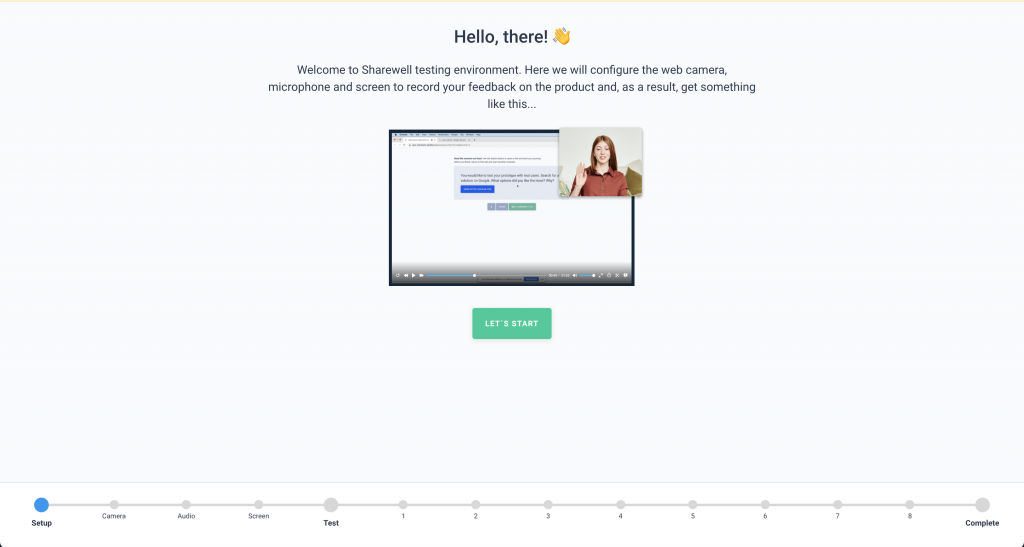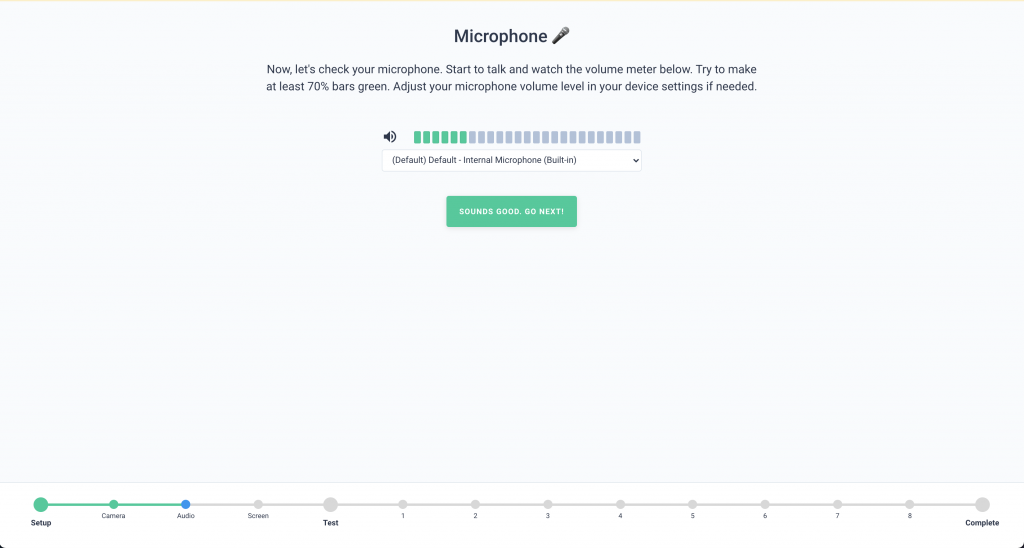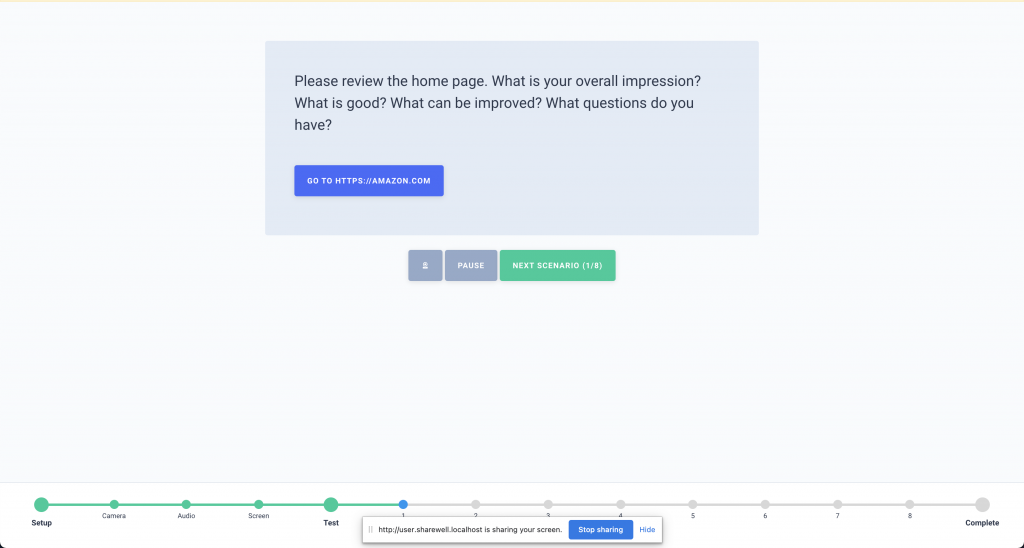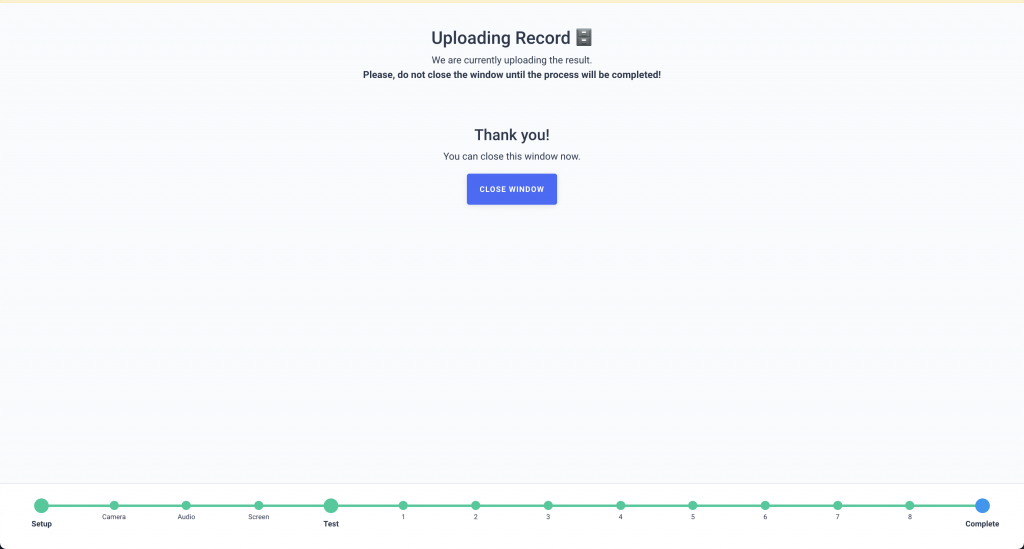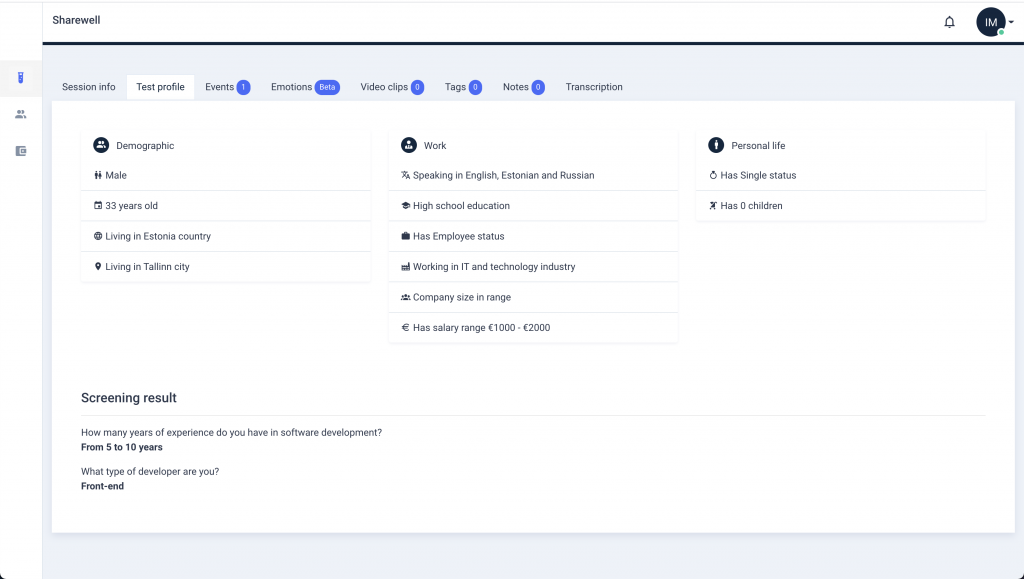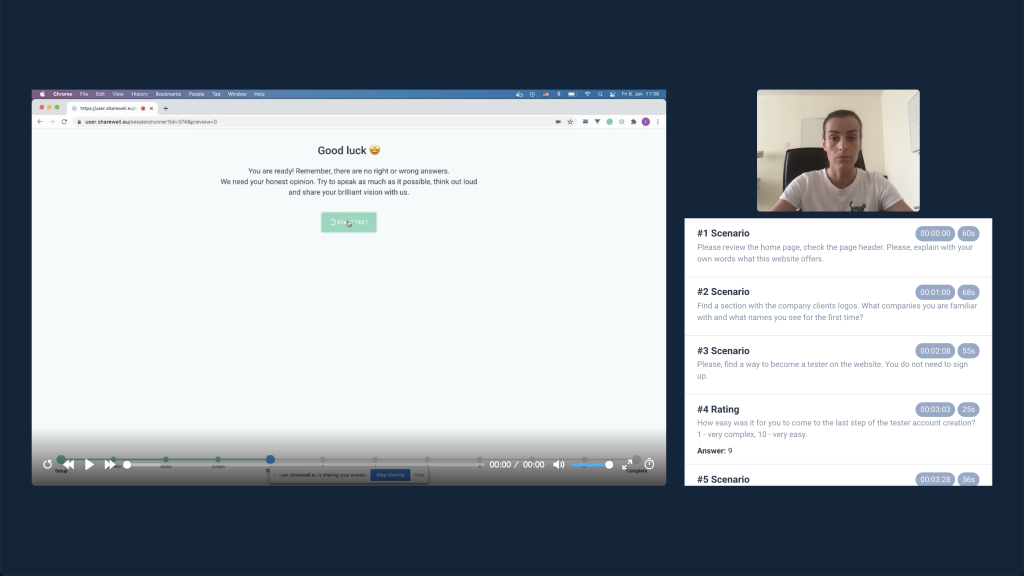Unmoderated user testing with Sharewell
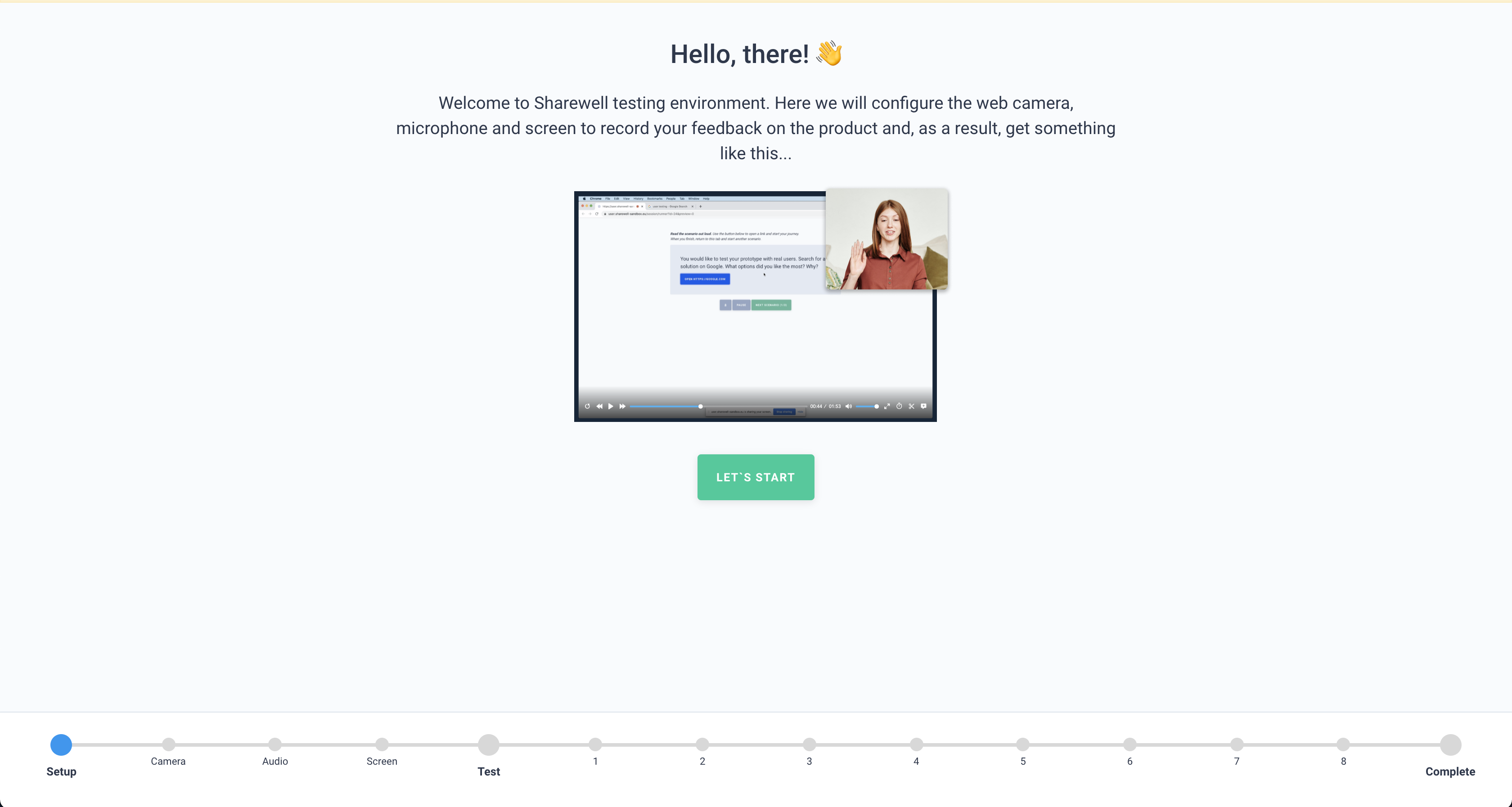
What is unmoderated user testing?
Anywhere, any time
Unmoderated user testing is just like it sounds. It’s not monitored or guided, and no moderator is present during the study. The only one in attendance is the participant, who participates in the study to complete tasks and answer questions. They do this at their own pace, on their own time, and at a time and location of their choosing. Pretty nice, right? Less hassle with scheduling and finding matching timeslots to conduct studies, as it is with moderated tests.
Unmoderated testing tends to be faster as participants can complete their tests at any given time without disruptions to your daily workflow. Now that we’ve established the differences between moderated and unmoderated tests let’s dive into when and how it is best suitable to apply each of these strategies based on your research needs.
Unmoderated vs. moderated testing.
Unmoderated user testing is easier to conduct and much less time-consuming. You can reach more test users without the need to manage all of them individually. You’ll also have more standardized results as the participants follow your premade test. With moderated tests, you’ll have to analyze the results separately, as there might be varying follow-up questions.
But in a way, follow-up questions are also a luxury. The possibility to always develop a comment into further insight is only available with a moderator present. They can also help out the participant if they get stuck. The type of insight you get from each of these methods also differs.

Unmoderated test experience for testers
Users have an effortless flow to complete the test you have created. At the start of each test, we help our testers configure their web camera, microphone, and screen recorder. This is done to ensure that there are no hiccups later with the video recording – the most important artefact of the session.
After the quick setup, we instantly move on to the study. It is highly recommended to provide clear instructions for the participants. Create easily understood scenarios and ask relevant questions. The more you ask, the more feedback you’ll receive. After the session has concluded, the video recording gets uploaded to our server. But don’t worry, it is still downloadable, and you can edit the video into shorter clips with our video tools.
Analyzing the results of your unmoderated tests
In the session results section, you’ll see multiple options for documenting and analyzing your results. Additional details like overall session information, more information on the test participant, and events that happened during the session can be found here. In terms of analyzing tools, we have made it easy to edit video recordings into smaller clips. You can also add notes to these recordings and get a transcription of the recorded audio for even easier access to information.
One of our newest tools is the emotional analysis tool, which uses face-tracking software to read the emotional responses from testers. It then evaluates the intensity of these responses and separates them into seven different groups. You can then look at the data to see how emotions changed during the test session or analyze every emotion separately.
Here is the example of the unmoderated test session video to show you what kind of feedback you can receive from our test users:
Conclusion
As we established before, unmoderated testing has multiple advantages:
- Test globally with any audience you need;
- Less time consuming;
- Lower remuneration costs because tests are shorter;
- Automatic and standardized session results;
- Tests simulate real-world situations as there is no one to do any “hand-holding.”
Sharewell lets you create unmoderated tests in less than 5 minutes and find necessary testers in a few hours. In contrast to other user testing platforms, Sharewell provides a Pay-As-You-Go pricing model that is unbeatable.

